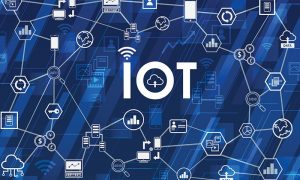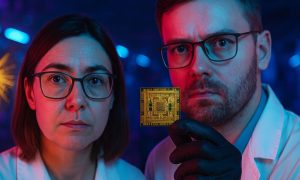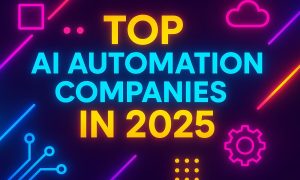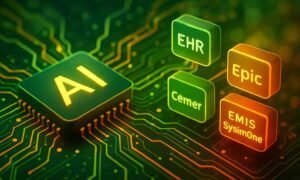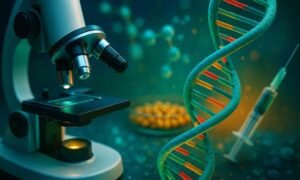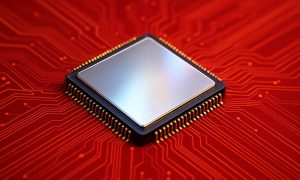

Are you an IoT Pofessional ? Join us at DIGITAL HEALTH WORLD CONGRESS 2017, on May 23-24 in London. (https://digitalhealthcareworldcongress.com/) Find out more about Global Digital Health and eHealth Market Trends and IoT Companies & Startups.
New platform allows customers to connect and manage billions of devices, powering applications that process, analyze, and act on IoT data on global scale
Arrow, Avnet, Broadcom, Intel, Marvell, Mediatek, Microchip, Qualcomm, Renasas, SeedStudio, and Texas Instruments to offer Internet of Things Starter Kits with AWS IoT ready hardware components
“We’re excited about AWS IoT to provide scalable and efficient connectivity for our connected ‘Internet of Clean’ products”
Today, many of the world’s leading manufacturers, developers, enterprises, and smart cities use AWS services to power a wide range IoT applications that span everything from energy metering and oil and gas production to fleet management and smart homes. However, operating highly available and reliable systems that connect and gather data from large fleets of “things” – sensors embedded in everything from manufacturing equipment and vehicle fleets, to fitness devices and homes – involves a significant amount of development and infrastructure effort. To manage this complexity, customers have had to build custom middleware that can translate device protocols (so that applications can interact with these devices) and provision infrastructure that can scale to support a high volume of simultaneous connections between cloud services, mobile apps, and an array of devices which may connect only intermittently and have limited compute, storage, or battery life. With AWS IoT, customers have a pay-as-you-go service that handles the heavy lifting involved in connecting any number of disparate devices, allowing them to securely interact with each other, cloud services, and applications while keeping them up-to-date, and collecting, analyzing, and taking action on the continuous streams of data they generate.
“The promise of the Internet of Things is to make everyday products smarter for consumers, and for businesses to enable better, data-driven offerings that weren’t possible before. World-leading organizations like Philips, NASA JPL, and Sonos already use AWS services to support the back-end of their IoT applications,” said Marco Argenti, Vice President, Mobile and IoT, AWS. “Now, AWS IoT enables a whole ecosystem of manufacturers, service providers, and application developers to easily connect their products to the cloud at scale, take action on the data they collect, and create a new class of applications that interact with the physical world.
With AWS IoT, customers can:
- Connect devices to the Cloud and to each other (Device Gateway and AWS IoT Device SDK): Devices connect to AWS IoT via the Device Gateway using both HTTP and Message Queue Telemetry Transport (MQTT), an industry-standard, lightweight communication protocol designed for sensors and mobile devices, making them interoperable independent of the protocol they use. AWS IoT also supports other industry-standard and custom protocols that customers may have already implemented, and devices can communicate directly with each other regardless of the protocol they use. AWS IoT scales as the number of devices grows, providing connectivity with low latency and high throughput on a global scale.
- Secure data and interactions: AWS IoT provides mutual authentication so that data is never exchanged between devices and AWS IoT without proven identity, and encrypts all data coming into and out of connected devices. AWS IoT is fully integrated with AWS Identity and Access Management (IAM), making it easy for customers to set granular permissions for individual devices, or fleets of devices, and manage them throughout the lifecycle of the device. Customers can generate and embed security credentials in their existing connected devices, or AWS IoT can generate new ones when devices are first activated.
- Process and act upon device data (Rules Engine): AWS IoT’s rules engine lets customers define rules that filter, process, and route data between devices, AWS services, and applications. Using the AWS Management Console, the AWS Command Line Interface (CLI), or AWS IoT APIs, customers can create rules that apply to data from a single device (such as a sensor), a group of devices (such as a sensor array), or a mix of devices and data sources (such as a sensor array and data stored in Amazon DynamoDB). Rules specify conditions that, when verified, instruct AWS IoT to take actions such as routing data to Amazon Kinesis, Amazon S3, Amazon Redshift, Amazon Machine Learning, or Amazon DynamoDB. For example, AWS IoT may receive messages from connected industrial equipment that produce vast amounts of telemetry data each hour, not all of which may be relevant to the business. With AWS IoT’s rules engine, the business can instruct AWS IoT to filter certain types of sensor data (e.g. pump pressure) as it comes in, and route only the specified data to Amazon Kinesis Firehose to be streamed into an Amazon Redshift data warehouse for later analysis. AWS IoT rules can also trigger AWS Lambda to run code that will take more complex actions, such as compressing data, or sending a push notification to an operator if an anomaly is detected. Customers can update rules in AWS IoT without intervention on the physical device, reducing the cost and effort involved in updating and maintaining large fleets of devices.
- Allow cloud applications to interact with connected devices even when they are offline (Device Shadows): AWS IoT creates a persistent, virtual version, or “shadow,” of every device that stores the latest state of a device so that applications or other devices can read messages from the device and interact with it anytime – even if it is offline. By providing always-available REST APIs, AWS IoT makes it easier for customers to build applications that interact with connected devices. Applications can read the state of a device or set a desired future state through API calls, and AWS IoT takes care of setting the correct state, sending only relevant changes to the device once it reconnects.
- Get started quickly with AWS IoT Starter Kits from leading hardware manufacturers: Through the new AWS Hardware Partner Program, a growing ecosystem of semiconductor manufacturers, including Arrow, Broadcom, Intel, Marvell, Mediatek, Microchip, Qualcomm, Renasas, SeedStudio, and Texas Instruments are offering IoT starter kits powered by AWS that include the AWS IoT SDK and hardware components that are ready to connect to AWS IoT. Available for purchase on www.amazon.com, these kits offer a wide range of microcontroller, sensor, and development boards that developers and manufacturers can use to very rapidly prototype AWS IoT enabled connected devices.
“At Philips we aim to empower people to take greater control of their health with digital solutions that support healthy living and improved care coordination,” said Jeroen Tas, CEO Healthcare Informatics, Solutions and Services, Philips. “Our HealthSuite digital platform and its device cloud are already managing more than seven million connected, medical-grade and consumer devices, sensors, and mobile apps. With the addition of AWS IoT, we will greatly accelerate the pursuit of our vision. It will be easier to acquire, process, and act upon data from heterogeneous devices in real-time. Our products, and the care they support, are enabled to grow smarter and more personalized over time.”
NASA and Jet Propulsion Laboratory (JPL) have instruments all over the solar system and beyond serving humanity with amazing data. Much of this data is already processed in the cloud, and it’s increasing daily. NASA’s experiments with AWS IoT have been highly positive and demonstrate that NASA can now use the compute power of the cloud to integrate and process the data provided by sensors in mobile devices, smart devices, conference rooms, clean rooms, and beyond. The AWS IoT integration with the foundational AWS services make it a very powerful platform for NASA JPL to build meaningful, connected, IoT experiences.
Diversey Care, a division of Sealed Air Corp, is the leading provider of smart, sustainable solutions for cleaning and hygiene. “We’re excited about AWS IoT to provide scalable and efficient connectivity for our connected ‘Internet of Clean’ products,” said Dr. Ilham Kadri, President, Diversey Care. “Supporting millions of connected cleaning appliances means we have to process massive amounts of telemetry and command data from these devices reliably, with low-latency, and cost-effectively. Now we can rely on AWS IoT for that critical infrastructure, and focus on helping our customers create cleaner, healthier environments.”
Rachio makes a WiFi smart sprinkler controller that helps customers water for better results and lower costs by adjusting for weather conditions and adapting to their yard. “Building connected devices is challenging enough, but great mobile apps are the primary way customers interact with our sprinkler controllers,” said Franz Garsombke, Chief Technology Officer, Rachio. “AWS IoT’s Device Shadows greatly simplify our app development. Our apps can use AWS IoT’s secure REST APIs to retrieve the last reported state of a sprinkler controller (environmental data), or set a desired future state (watering time and amount). It means our app development can move faster than ever, and we can focus even more on building a great customer experience.”
“Our smart city products need to evolve with the needs of taxpayers over time,” said Michael O’Neil, Chief Technology Officer, Intersection, one of the companies behind LinkNYC, an initiative that will replace the aging network of public pay phones into networked hubs that provide information and connectivity across New York City. “We’re constantly experimenting in order to do that. AWS IoT is great for us because we can prototype quickly with SDKs for C, JavaScript and Arduino, or even choose a readymade starter kit. As our prototypes mature into production features, we can feel secure that AWS IoT will also support them at urban scale.”
APN Partner support for AWS IoT
Many customers require additional IoT software and services to extend the AWS IoT platform, and AWS Partner Network (APN) Partners offer operating systems, management platforms, analytics, and services that work with AWS IoT. For example, the Micrium and Ubuntu operating systems have the ability to run the AWS IoT Device SDK and connect to AWS IoT. And, if customers need additional device management capabilities, such as over-the-air updates or remote diagnostics, APN Partners like Ayla Networks, Cirrus Link, Thingworx, and Xively offer these services. As data flows into AWS, customers can get insights and predictions through APN Partner Splunk. Finally, customers that want help bringing all these pieces together and customizing them for their specific use can work with system integrator APN Partners Accenture, Booz Allen Hamilton, Thinglogix, Two Bulls, and a whole host of others.
About Amazon Web Services
Launched in 2006, Amazon Web Services offers a robust, fully featured technology infrastructure platform in the cloud comprised of a broad set of compute, storage, database, analytics, application, and deployment services from data center locations in the U.S., Australia, Brazil, China, Germany, Ireland, Japan, and Singapore. More than a million customers, including fast-growing startups, large enterprises, and government agencies across 190 countries, rely on AWS services to innovate quickly, lower IT costs, and scale applications globally. To learn more about AWS, visit https://aws.amazon.com.
About Amazon
Amazon.com opened on the World Wide Web in July 1995. The company is guided by four principles: customer obsession rather than competitor focus, passion for invention, commitment to operational excellence, and long-term thinking. Customer reviews, 1-Click shopping, personalized recommendations, Prime, Fulfillment by Amazon, AWS, Kindle Direct Publishing, Kindle, Fire tablets, Fire TV, Amazon Echo, and Alexa are some of the products and services pioneered by Amazon.
Contacts
Amazon.com, Inc.
Media Hotline, 206-266-7180
Amazon-pr@amazon.com
www.amazon.com/pr




